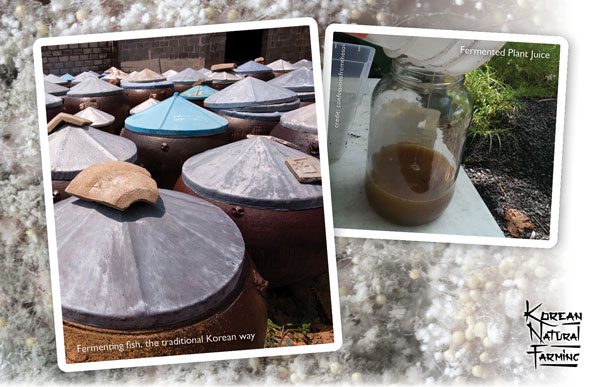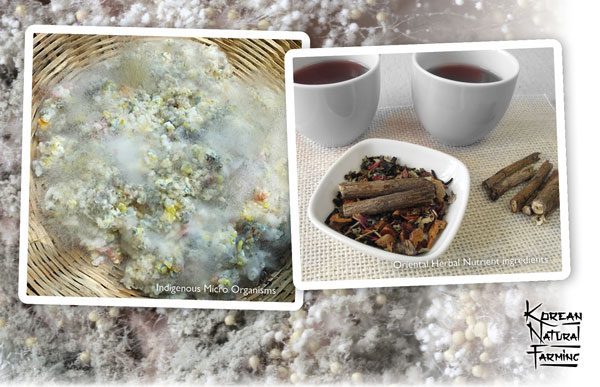With the current state of world geopolitics being what it is, you’re forgiven for thinking that this is some propaganda tool from Kim Jong Un. Don’t worry, my friend, this is no such method of MKUltra-style mental warfare, but more a process of growing that, when mastered, will have you busting out overly flamboyant, self-righteous dance moves to celebrate your success.
Growing organically is something that a lot of die-hard growers aspire to do. Quite often you see a hydroponic enthusiast hastily making their way down the salty path, with the promise of ‘total nutrient control’ at their disposal. This is, of course, quite true. You totally can control the nutrients to an excellent degree and this will, when used correctly, provide you with a bountiful crop. Being able to ‘see’ and quantify what is happening at any one moment makes for a very appealing prospect to our analytical – right hemisphere dominated brains.
There Is No Spoon
There is, however, a lot more to plant growth than just nutrients. Hence, why you see a million different bottled additives adorning hydro shop shelves, essentially all trying to fill the gaps of the base nutrients and at the same time, takes more money from your pocket. From enzyme products to amino products to mysteriously alluring ‘boost’ products, everyone wants to find (and then sell you) the next magic product that will double your yield or enhance terpenes, flavors, and quality.

The problem, however, is how disconnected from an actual plant this makes a grower. Blindly following a nutrient chart from week to week, using bottles of nutrients just because it says to do so there on the shiny looking feed schedule. There is another way my friend, and not only will doing it all yourself make you feel totally awesome, but it will also give you a much deeper understanding of plants and the whole natural world in the process. Win-win.
Man vs. Nature
As a species, us humans love to think we know best. Constantly forcing Mother Nature onto her knees and raping the environment, simply as a byproduct of our presence here on Earth. We relentlessly take what we need and do what we want on a global level with little regard to the impact that it has on the land. For example, rather than harnessing the processes nature has perfected over millions of years of evolution, we choose to use our petrochemical-derived, salt-based fertilizers to grow plants.
The father of modern-day fertilizers even admitted himself that the salty path might not the best to walk along. A couple of quotes from the man himself (Justus von Liebig) indicate that thinking we can improve on nature is fundamentally flawed:
“When a chemist makes a mistake in creating agricultural fertilizers, don’t be too critical of his errors, because he has had to base his conclusions upon facts which he can’t know from his own experience, but rather, has to take from agricultural texts as true and reliable. After I learned the reason why my fertilizers weren’t effective in the proper way, I was like a person that received a new life.”
“I had sinned against the wisdom of our creator and received just punishment for it. I wanted to improve his handiwork, and in my blindness, I believed that in this wonderful chain of laws, which ties life to the surface of the earth and always keeps it rejuvenated, there might be a link missing that had to be replaced by me: this weak, powerless nothing.”
Justus von Liebig knew (eventually) that we need to work alongside natural principles and enhance their effectiveness, rather than try to re-invent the wheel altogether. Modern-day organic growers will quickly attest to this, being usually quite outspoken when it comes to testifying how much better the produce is with an organic crop. Is it really ‘organic’ though? What does that even mean? Does buying and using bottled nutrients labeled as ‘organic’ even really mean that you are growing truly organically? Well, at the very least, it’s a step in the right direction, I guess.
Down the Rabbit Hole
An all-around lovely chap by the name of Cho Han-Kyu has been at the forefront of spreading the good word of Korean Natural Farming (KNF) since roughly 1966. Essentially, KNF involves the grower adopting practices that ultimately harness the processes that already exist in the natural world around them. Enhancing bacterial and fungal life, proliferating the diverse natural life in the soil itself, and using natural inputs that surround you in your immediate environment. Ultimately, working in harmony with nature itself. Yes, I know it sounds like some crazy hippy shit, but it really works, and it is totally cool, man.
Master Cho developed techniques that work alongside the natural world rather than trying to dominate it, and their practice has spread across the globe. Chris Trump has been successfully practicing KNF techniques at his 800-acre macadamia nut farm in Hawaii for years now and spreading the good word along the way. You can find many informative videos he has produced on the old interweb.

The fundamentals of KNF are maintaining a healthy living soil, with rich organic content, rammed with a diverse microbiological life and then irrigated with a range of inputs that are sourced and made from local materials. You continually work to improve the existing natural biological system, creating a powerful and fully functioning soil-food web, rather than washing the life out of your soil with salty water. So, what methods are these exactly then? What does it all involve?
Wha Fi Gwan
KNF requires you to think a little bit more esoterically about the natural world, so get ready to engage your left brain. There are a few techniques to learn, but probably more taxing than learning how to perform these tasks is simply remembering all the acronyms for them, so be prepared to engage your right brain as well. The actual methods to create these will be fully detailed in future KNF episodes (so keep your eyes peeled), but for now the following is a broad summary of what KNF involves.
Indigenous Microorganisms (IMO)
IMO is fundamentally the backbone of practicing KNF and probably the most fun to do! This is the process of going out into the field and collecting indigenous microorganisms. Make sure you are highly selective of the area from which you collect. Ultimately, you are aiming to gather the most diverse and most beneficial microorganisms possible. The various stages of IMO 1-5 represent different stages of collecting, storing, and then propagating cultures of bacteria and fungi to introduce into your substrate and/or soil.
• IMO 1 – Collecting beneficial microbes out in the field.
• IMO 2 – Preparing the microbes for storage.
• IMO 3 – Inoculating a suitable (carbon-based) carrier.
• IMO 4 – Preparing a usable and active substrate – usually indigenous soil.
• IMO 5 – Incorporating nitrogen-rich fertilizer material, a suitable final compost mix.
It is a lengthy process, but also an extremely rewarding one. By the time you make it to IMO 5, you will end up with an extremely active potting soil that is mega-rich in organic nutrients. The words ‘super soil’ don’t do it justice. Given half the chance (and necessary anthropomorphic motor functions), it would laugh in the face of inferior, lifeless, store-bought potting compost.
Oriental Herbal Nutrient (OHN)
OHN is a liquid root-drench that has highly anti-pathogenic quality. It works to prevent disease-causing fungi and helps to improve the overall vitality of your plant. It is probably the most difficult aspect of KFN to produce, but also the most fun! The aim of the game here is to make an alcoholic tincture from a variety of fermented herbs. Typically, it is a five-part recipe including angelica, garlic, ginger, cinnamon, and licorice root. Like a fine wine, it matures and becomes more potent with age.
Fermented Plant/Fruit Juice
(FPJ/FFJ)
Possibly the easiest, quickest, and most fun aspect of KFN practices. It involves sourcing plant material, combining it with dark brown sugar, and waiting a week or so to ferment out all the plant loveliness trapped inside. Your final ferment will have all the good stuff present: nutrients, hormones, proteins, aminos, and enzymes. The type of contents of the ferment depends greatly on the material you source. They only take a week or so to make, and the possibilities are almost endless. One of the most effective ferments is that of the plant itself you are going to use the ferment on. For example, ferment a load of rosebuds and use the juice as part of an early flower feed for next year’s rose crop.

Lactic Acid Bacteria (LAB)
LAB refers to a large group of bacteria that produce lactic acid as a by-product of their digestive system. LAB are probiotic bacteria beneficial for many types of life. Among other things, applying LAB cultures to your soils can help to accelerate organic matter decomposition, enhancing the release of plant nutrients for absorption. Possibly the most fun to make and simple too, using rice-washed water and some milk; you capture LAB from the environment and culture it in the end product. For all you food buffs out there, it’s also the first step of the process to making cheese.
Fish Amino Acids (FAA)
Making your own fish fertilizer can get a bit smelly, but it offers tantalizing benefits for Natural Farming. It is an amazing food source for fungi especially, helping to boost fungal growth. The amino acids found in FAA (as well as performing their own functions) also contain forms of nutritional elements for the plant, like nitrogen. Despite the initial smell, when fermentation is complete it is almost pleasant to the nose, and the whole process is possibly the most fun of all to do!
Water-Soluble Organic Nutrients
Resembling some sort of gardening alchemy, you are creating a solution that offers immediately available, soluble nutrients for a quick nutritional boost, while still being derived from completely natural and organic processes. Calcium, phosphorus, potassium, etc. can all be successfully extracted into a solution from sources such as bones or crustacean shells, and applied to your plants at key periods in their life, when you know they need that little extra hit.
More Than a Summary of Its Parts
This is by no means a definitive list of all there is to KNF. Something as awesome as KNF is hard to confine to a tight word count. Hopefully, you have at least gained a broad understanding of the fundamental concepts it involves, and become inspired enough to look into it all a bit more. There is a lot to KNF; it is a very rewarding process that makes you look at nature in an entirely different way. Over the next few issues we will go into each aspect of KNF in a whole lot more detail, but for now, just make sure you stock up on brown sugar, you’ll need it.
Great information. And I much enjoy your style of writing!